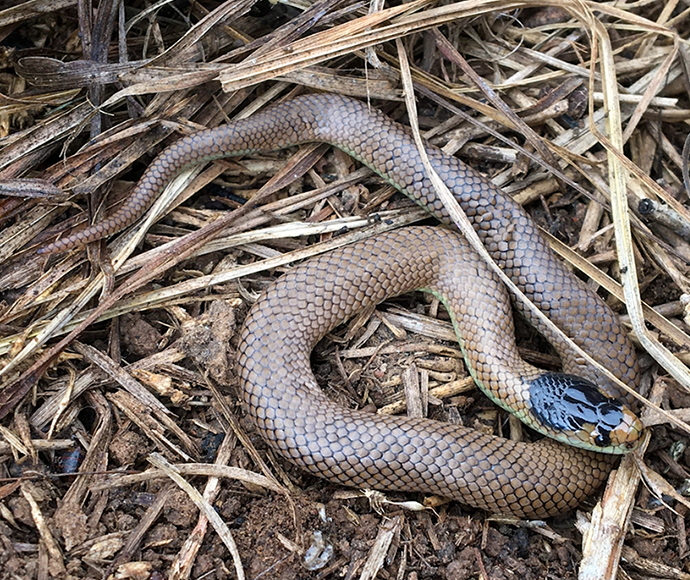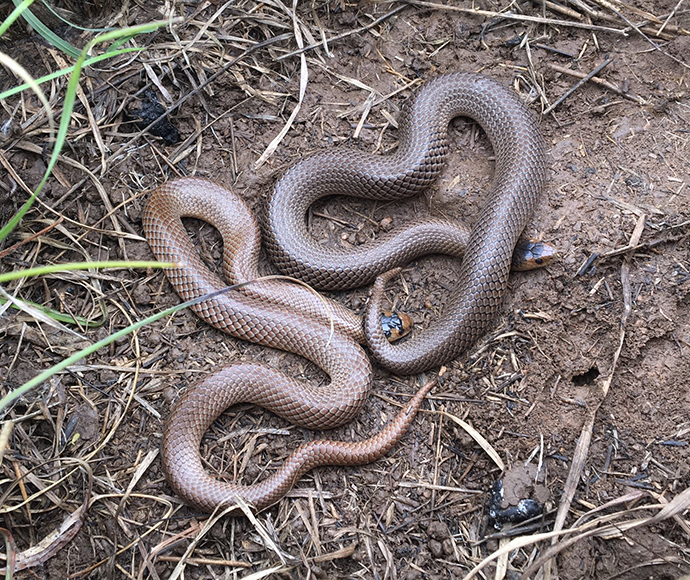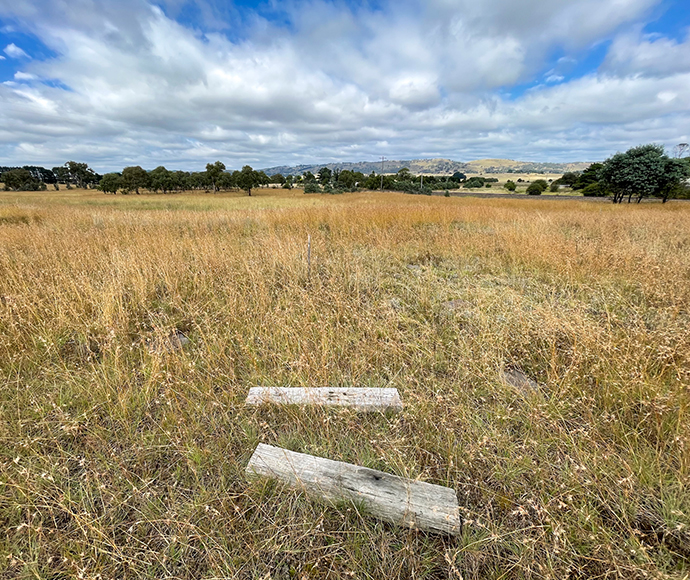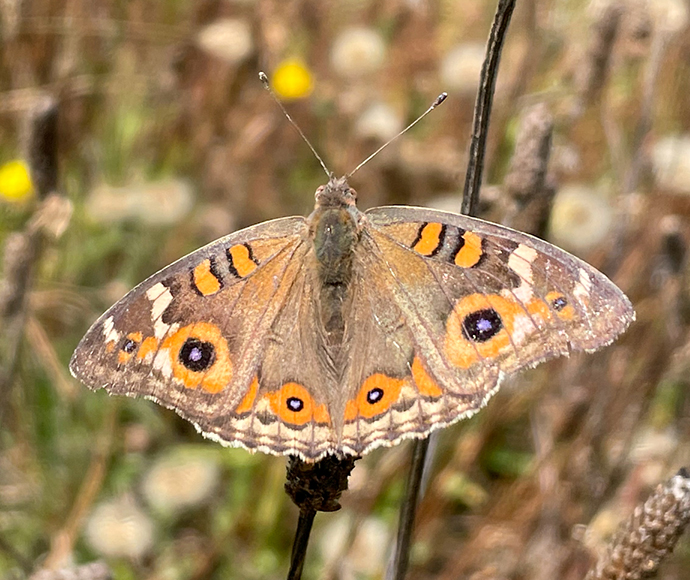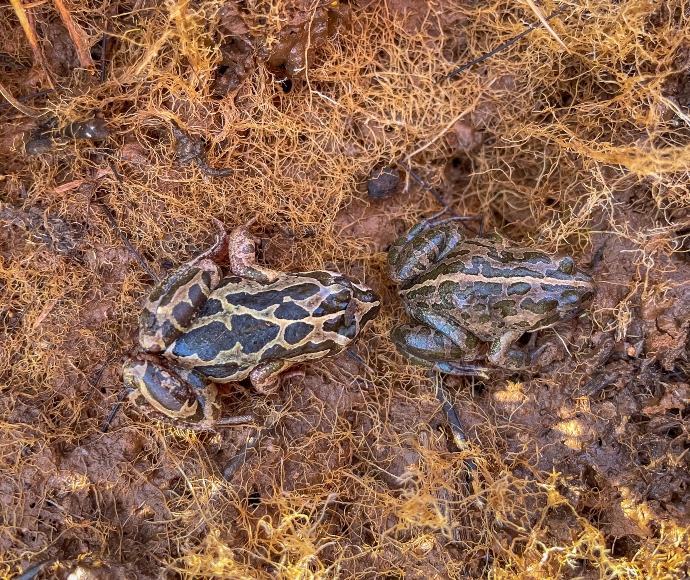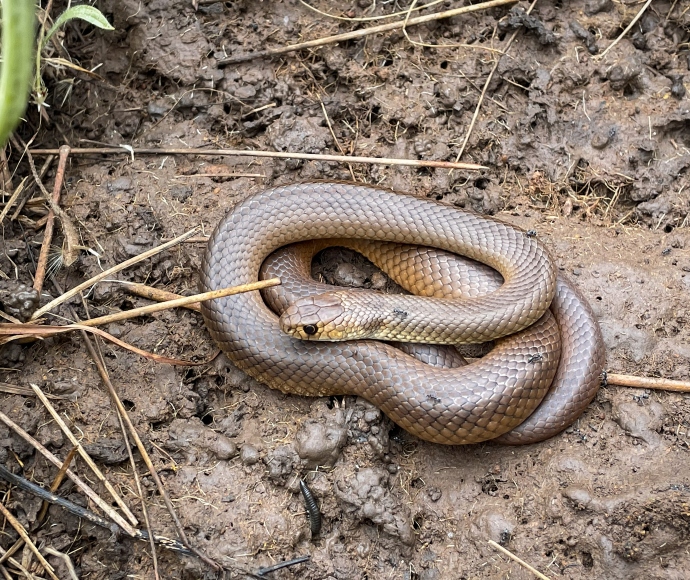Meet the little whip snake, a rare and surprisingly beautiful reptile
Hello from the Southern Tablelands. I’m Erika Roper, Threatened Species Officer for the Saving Our Species Program, and I’m here to take you on another field trip.
Throughout each year, I put on my gaiters and gloves and head out to a little nature reserve on Ngunnawal and Ngambri land near Bungendore, New South Wales, to look for snakes for a long-term monitoring program.
The target species is the little whip snake (Suta flagellum), considered by some to be the cutest snake in the world, though we often find less endearing tiger snakes and eastern brown snakes as well (hence the gaiters and gloves!). Little whip snakes are listed as vulnerable in New South Wales and are found in a few remnant patches of native grassland and woodland in south-eastern New South Wales and the Australian Capital Territory.
The little whip snake is a small orange-brown snake with an hourglass-shaped black cap on the top of its head and dark edges to its scales. The dark scale edges make these snakes look like they're wearing a fishnet stocking, which is a good way to distinguish them from juvenile brown snakes. Males and females can be distinguished from each other by tail length, with males having a long, skinny tail and females a short tail. Little whip snakes are mildly venomous but are very placid and have tiny teeth, so are virtually harmless to humans. Even so, to avoid unnecessary stress, we don’t handle them.
The little whip snake is what we call a 'data deficient' species, which means we don’t yet know enough about the species ecology to manage it and its threats effectively. Little whip snakes have many threats, including habitat loss due to land clearing, removal of critical habitat elements such as rocks and logs, feral and pet animals (such as dogs and cats) and humans. We conduct regular long-term monitoring to learn more about little whip snakes, like what kind of microhabitat they prefer, where in the reserve we are more likely to find them, what time of year they are more active, and when there are juveniles present.
To replicate the snakes’ natural habitat of rocks and logs, we have placed roofing tiles and railway sleepers around the nature reserve. Early in the morning while the snakes are still asleep, we lift each one to see if anyone is sleeping underneath. We record environmental information like time, temperature, humidity and cloud cover, as well as the number of individuals of each species under the tile. Regular seasonal monitoring is a highly valuable tool in the conservation of threatened fauna species, especially those where knowledge about the basic ecology of the species is lacking, like the little whip snake.
Like many conservation actions, replacing rocks and log habitat in the reserve doesn’t just benefit the little whip snake; many other species use the tiles and sleepers for shelter. We often find invertebrates like centipedes, spiders, worms, beetles and smaller skink species like three-lined skinks and three-toed skinks. In winter, when the ground is wet, we find a lot of frogs, usually spotted marsh frogs, but sometimes other species like toadlets and striped marsh frogs. Unsurprisingly, summer is a good time for snakes and we often find tiger snakes and eastern brown snakes snoozing under the tiles.
Life in Australia wouldn’t be the same without snakes, so do your part to conserve them in your local area. Watch where you're stepping when out for a walk, keep your cats inside and dogs on a leash, and if a snake turns up in your backyard please don’t kill it (which is illegal). You can call a wildlife rehabilitator or trained snake relocator, who will safely catch the snake and move it away from your property.
